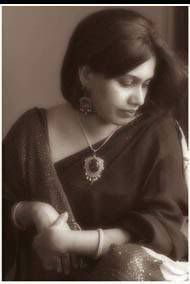Why do we wear dark glasses ?
To reduce the light reaching and hurting our eyes.
Why does it hurt ?
The pupil contracts to the minimum and can't close any further.
The sky is uniformly blue all over, north to south pole. You see saturated blue sky when the sun is behind you. As you turn towards the sun it turns white. It is blue all over but our eyes can't see it and it is more saturated than what we see.
There are certain filters called polarisers, and neutral density which photographers and cinematographers use to cut the light. These filters come in different shades of grey like ND1 ND2 ND3 ND4. You are actually making the camera wear dark glasses to get the saturation. Polariser when rotated cuts the reflection on the non metallic objects and brings out the saturation. Flowers look more saturated under cloudy sky, and polorizers are not very effective under cloudy conditions, actually you don't need them.
It is the ultra violet radiation which causes all the damage and makes the plain photo grey glasses turn dark. Such neutral density screens are available for computer monitors as well to reduce the radiation reaching the body. Believe me it is harmful, the worst being loss of hair. The pupils in our eyes are continuously under strain, it is more harmful to the eyes when the room is dark. The surrounding area should be at least half as bright as the monitor. But you don't need the ND screen if you can reduce the brightness of the monitor to minimum until the edges of the monitor just turn black. Its pretty tricky as the present day normal monitors don't handle finer shades of grey like the digital cameras as against the film. Very expensive monitors and digital cameras handle light shade ratio well, they come very close to film. Its a big subject I'll deal with it later. You always enjoy watching a movie in a theatre. Most of the soap operas on TV are uniformly lit as the TV cannot handle very low light. You'd enjoy serials like x-files more on the theatre screen if shot on film.
The clock on this page was white, I changed it to black for easy calibration. If the dial is grey, your monitor is too bright, it is harmful for your eyes. and you lose the saturation of colours. The fonts I use on my post are grey. All for a reason. As white against black would hurt your eyes. At the top you can see the 8Pennylane picture, which will give you shades of grey.
Please close your eyes for a couple of minutes every half hour. Eyes relax when the pupil is fully dialated. In the nights please switch on the lights a couple of minutes before you boot the computer.
Daylight Again
Permalink ¤
-
Chinna, the trouble started in Kothamangalam when I went to a browsing centre, I was shocked to see my page where every thing was bleached. The clock was almost white. I decided to write a blog on the subject right there.
There's a shadow on 10 and 11 dots
and the seconds markings, its hard to see. My monitor is slightly on the darker side. When ever I work on pictures and make prints, i tell them to make half stop deeper.
The printers invariably make deeper prints for all. -
I always go to Kothamangalam e2dees, you can go to Munnar, Adimali and Thattakkadu is just 12 KM from there.
Please don't stay up late, eat well e2dees junk or what ever, less food, less oxygen in blood going to head, loss of hair, eye problems, and if you are at home please drink lots and lots of water. -
Very cool design! Useful information. Go on! Lady voyeurs Phendimetrazine success story rusk county tx refinance mortgage Columbia jackets and coats leather coats Fatty foods body fat losing weight Fibromyalgia and klonopin referee's signals in basketball http://www.ferrari-race.info/Jinx-tshirts.html Whiplash fishing line Rent car rack 03 nissan minivan prom dresses allentown pa









Thanks for the tips. I'll try to apply and remember them.